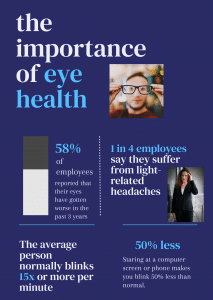While most people have heard of cerebral palsy, not everyone knows exactly what it means to live with this disorder, unless they are dealing with it personally. Cerebral palsy, commonly referred to as CP, is one of the most common disorders in children in the U.S. Around 10,000 babies are born each year with cerebral palsy, with the condition affecting more boys than girls. Cerebral palsy can cause a range of disabilities; almost 764,000 children and adults in the U.S. have at least one symptom of the disorder. March is National Cerebral Palsy Month, so in order to bring more awareness to this condition, we will discuss what it is, the risk factors for it, the early signs of it, and treatment options.
What Is Cerebral Palsy?
Cerebral palsy is a neurological condition caused by damage to the brain that affects motor skills and movement. This brain damage can be due to a brain injury or abnormal development of the brain during pregnancy or immediately after birth. Most people who have CP are born with the condition, with symptoms usually appearing in early childhood. It is not life-threatening, but unfortunately there is no known cure.
Different Kinds of Cerebral Palsy
There are 4 different types of cerebral palsy:
- Spastic Cerebral Palsy– This type of CP accounts for 75% of all cases. It causes increased muscle tone or tightness which makes them stiff and difficult to move. It causes abnormal movements, the inability to move, spasctic muscles, and difficulties moving from one position to another or controlling muscle movement.
- Athetoid Cerebral Palsy- Also known as dyskinetic CP, this is the second most common type of cerebral palsy, accounting for 10-20% of all cases. Symptoms can include repetitive and twisting motions, unpredictable movements, poor posture, and difficulty swallowing or talking.
- Ataxic Cerebral Palsy- This is the least common type of CP, and causes poor balance, tremors and shaky movements.
- Mixed Cerebral Palsy- Some people living with CP experience symptoms of two different types of cerebral palsy.
How CP Is Diagnosed

Doctors will usually become concerned if there is a delay in a child’s motor development as they hit certain milestones. About 40% of babies and children with CP will have a limited ability to crawl, walk, and run, so if their doctor observes any of these issues in a child, they will do a number of tests to check for injuries to the brain. They will use imaging including:
- MRI
- CT
- EEG
- Cranial Ultrasound
Doctors will also test the child’s hearing, vision, and cognitive function during the visit.
Risks
Babies who are born prematurely are at a higher risk of developing CP due to complications like bleeding in the brain. Other risk factors include:
- Abnormal deliveries, such as a breech birth (feet first)
- Maternal diabetes or high blood pressure
- Genetic abnormalities
- Poor maternal health
- Medical malpractice
- Bacterial and viral infections
- Bleeding in the brain
- A lack of oxygen to the brain before, during or after birth
- Prenatal exposure to drugs and alcohol, mercury poisoning from fish and toxoplasmosis from raw/undercooked meat
- Head injuries sustained during birth or in the first few years of infancy
- Severe jaundice

In order to lower the risk of CP, when pregnant, it is important to eat well, take prenatal vitamins, and get checked regularly.
Unfortunately, there is no real way to prevent cerebral palsy, but there are ways to lower the risk of a child being born with it, including:
- Eating well during pregnancy
- Controlling any pre-existing medical issues
- Taking recommended prenatal vitamins
- Having regular prenatal check ups throughout pregnancy
- Getting screened for potential complications
Most Common Signs
The symptoms of CP are different for every child, but the most common signs to look for include:
- Drooling
- Problems swallowing or sucking
- Floppy or stiff muscles
- Seizures
- Difficulty with speech
- Involuntary movements
- Incontinence
- Lack of coordination
- Jerky reflexes
Treatment Options

If a child is diagnosed with cerebral palsy, then a treatment plan will be provided to help improve their overall quality of life. Managing symptoms is key, which can be done with medication, surgery to improve mobility or manage pain, and different forms of therapy such as:
- Speech therapy
- Physical therapy
- Occupational therapy
- Behavioral therapy
- Music therapy
If you are planning to get pregnant or are currently pregnant, seeing your doctor regularly and getting genetic testing can go a long way in protecting your baby – and having the right health insurance plan can help provide the best healthcare without breaking the bank. Some testing will not be covered under certain plans, which could end up costing you hundreds of dollars. And if your child is diagnosed with cerebral palsy, then having the right plan will give your child the best care they can get to improve their quality of life.
If you are in need of a comprehensive health insurance plan that will provide the care you need and fit in your budget, EZ.Insure can help. We want to take the burden of healthcare costs off your shoulders, so one of our agents will work closely with you to find the best plan that meets all of your needs. We will compare plans for free, and even sign you up for free. To instantly compare free quotes, simply enter your zip code in the bar bove, or to speak to an agent, call 888-350-1890.













